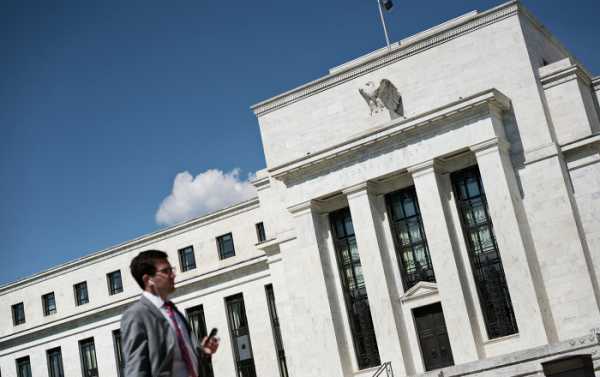
The US central bank is expected to introduce a new scheme to provide liquidity to commercial banks to support lending and business activity without cutting interest rates too deep; the facility could also help the Fed fix the highly-disturbing inverted yield curve.
Kristian Rouz – Analysts from the German financial giant Deutsche Bank expect the US Federal Reserve to launch a new liquidity adjustment facility next year in order to spur US lending and business activity without implementing excessive monetary stimulus.
Deutsche experts believe the Fed will introduce a repo scheme, providing commercial banks with money through repurchase agreements.
According to a report by Deutsche Bank, the Fed is seeking to boost its lending to commercial banks by using Treasury bonds and other securities – mostly, bonds – as collateral. The repo facility could be formally introduced in several months, and Fed officials could soon start testing the scheme.
“We reaffirm our expectations that the Fed could test this facility later this year and launch it for full-scale operations in early 2020”, Steven Zeng of Deutsche Bank wrote in the research note.
The report comes as the Fed is increasingly concerned with the so-called “inverted yield curve” that formed in the US bond market several months ago – meaning the yield on longer-term bonds is now higher that the profitability of short-term notes.
Central bankers see this as an indicator of low investor appetite for risk, and a high demand for safety – which could lead to disinvestment in the broader US economy, causing a recession.
The repo facility – backed by the Fed’s almost $4-trillion balance sheet made up mostly of debt securities – could also help the central bank boost the demand for shorter-term bonds, aside from pumping more money into America’s financial system.
The repo scheme will allow the Fed to avoid cutting interest rates too deep in case of economic shocks in the future, as the central bank will be able to redirect the roughly $4 trillion in its bond portfolio straight into the American banking system.
Additionally, Deutsche experts say the repo scheme will protect the financial institutions operating in the US market from possible spikes in commercial interest rates, and alleviate the negative effects of Fed rate hikes to lending and business activity.
Fed officials reportedly discussed the repo facility at a policy meeting last month, and have yet to reach an agreement on the scheme’s specifics.
Meanwhile, some experts say now that the Fed is considering ending its interest rate hikes, which began in December 2015, the central bank could also abandon its effort to reduce its balance sheet.
Moreover, if the Fed starts cutting rates this year, additional purchases of Treasury bonds could follow – resulting in the central bank’s balance sheet ballooning far beyond the $4.5 trillion at the height of quantitative easing (QE) in 2014-2015.
“Our base case remains for this (repo) facility to be implemented eventually, but we think it can take longer than we previously expected – around Q3 2020 – given diverse opinions on the parameters from the participants”, Steve Kang, Vice President of Citigroup Inc., said.
Experts believe the repo facility could also help the Fed reduce its balance sheet without actually selling Treasury bonds on the open market. Larger banks would also be less inclined to keep cash as reserves, using their capital for business operations instead – due to their awareness they could always borrow from the Fed’s Treasury-backed scheme.
This will also allow smaller banks to keep more of their limited capital as reserves, using borrowed funds for daily operations instead.
The scheme would also lead to a greater use of Treasury bonds in the broader US economy. Economists expect the trading volumes in US government bonds to increase, while banks will have more options to hold their reserves in either cash or securities – and by choosing the latter they may boost market demand for short-term Treasuries, which could partially fix the inverted yield curve.
Deutsche experts say the Fed could set its repo facility rate at 0.35 percent above its interest paid on bank reserves. However, the rate could either increase or decrease shortly after the facility is launched, depending on the demand for repo financing from commercial banks.
The US central bank could initially include most sustainable commercial banks and the 24 bonds traders already working with the Fed, as the first partners on its repo facility. The scheme could subsequently expand to include a larger number of financial enterprises across the US.
Sourse: sputniknews.com






